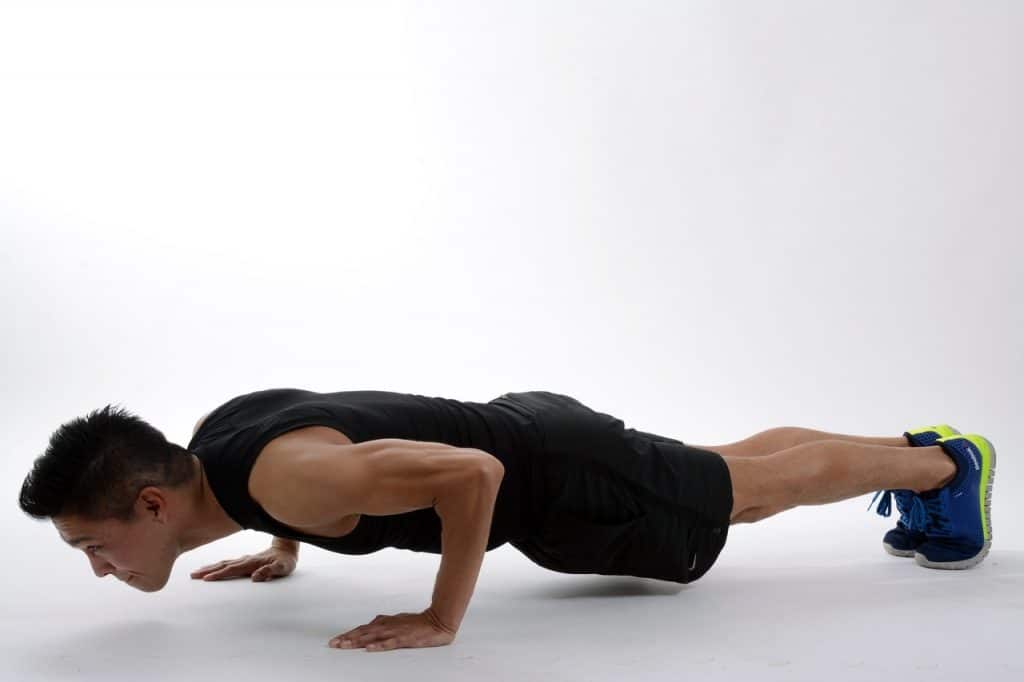[Article updated on 19/09/2023]
On the web, there is often talk of a new concept deemed effective for having a flat stomach, the Plank Challenge. The aim of this sporting challenge is to firm the body and refine the abdomen through the performance of short exercises over a period of time. A challenge that apparently seems easy to achieve or take up with benefits for the figure. However, it may be insufficient to reshape the stomach.
What is the Plank Challenge?
The concept Plank Challenge is made up of two English words, Plank which means board and Challenge which is also used in French to allude to a challenge. So, by literally translating this concept, we obtain: the plank challenge.
The plank is the name of a well-known physical exercise. When the Plank Challenge is performed correctly, the body must be perfectly straight, like a normal plank. The subject forms a sort of plank with their body and must maintain this upright position for a specific period of time.
The Challenge consists of performing this exercise during a period of time, 30 days. The Plank Challenge will therefore consist of perform the plank exercise for 30 days. The expression “30 days plank challenge” is then used to designate this concept more explicit.
The Plank Challenge is therefore the act of repeating daily plank exercise or plank position for 30 days changed the duration of the exercise. This duration increases over time. Thus, the duration of the board is very precise daily and is not the same from the first day to the last day.
Strengthening the deep muscles of the abdomen is an objective of this exercise which also aims to obtain a flat stomach. Also, the plank is used to reduce the risk of injury that can occur following a traditional training session.

How to do the Plank Challenge?
The Plank Challenge is characterized by a position that must be maintained correctly for a few seconds or minutes. The duration of the exercise evolves over time and falls within a period of 30 days.
The plank exercise or plank position
The plank exercise consists of adopting a position. This involves leaning on your elbows and the tips of your toes to balance, while placing yourself horizontally and parallel to the ground. The principle consists of adopting this straight and elongated position, then maintain it for a specific period of time, while working to gain the maximum muscles. When performing the plank exercise:
- the legs are extended;
- the feet are delicately apart;
- the head must look at the ground;
- the back should be straight.
So the body must be in a completely straight line. You must avoid generating tension in the neck and back. To do this, you must look at the ground to allow the neck and spine to be well aligned. Also, you must avoid any form of lumbar curvature by working to ensure that your back is straight. To avoid an increase in blood pressure, you must breathe and avoid holding your breath. Beginners can seek the advice or expertise of a professional to properly complete the board and lose some belly.
The duration of the plank
The 30 day plank challenge will consist of Time the length of time you perform the plank exercise each day. This duration is determined in a program which also provides days of rest. This 30-day program is established as follows:
- Days 1 and 2: 20 seconds;
- Days 3 and 4: 30 seconds;
- Day 5: 40 seconds;
- Day 6: rest;
- Day 7 and 8: 45 seconds;
- Days 9, 10, 11: 60 seconds;
- Day 12: 90 seconds;
- Day 13: rest;
- Day 14: 100 seconds;
- Day 15: 110 seconds;
- Days 16 and 17: 120 seconds;
- Day 18: 150 seconds;
- Day 19: rest;
- Days 20 and 21: 150 seconds;
- Days 22 and 23: 180 seconds;
- Days 24 and 25: 210 seconds;
- Day 26: rest;
- Days 27 and 28: 240 seconds;
- Day 29: 270 seconds;
- Day 30: 300 seconds.
Therefore, it is advisable to start by holding the plank position for 20 seconds and gradually increase the time spent performing the exercise. This progression allows you to slowly build strength and endurance.
The specificity of the Plank Challenge
What makes planking unique is that it is an isometric exercise, meaning we balance in a controlled position without moving, unlike other exercises that require a series of movements. Thus, the subject performs the exercise in a static position, the points of support are fixed. He is motionless in a specific position, but the muscles are contracted. There are therefore no movements, but a continuous contraction which allows you to solicit the back and abdominal muscles, making them work until you feel a certain muscular fatigue.

What do we need to plan Challenge?
The realization of the Plank Challenge is easy, because there is practically no specific equipment to acquire, as is the case with the exercises in the rooms sport. All you need is a flat floor and a watch with a stopwatch or of a Smartphone for measuring the duration of time.
Initially, a gym mat can be used to limit pain sensations in the elbows.
Above all, the Plank Challenge requires a good dose of motivation and determination to complete the challenge daily for a period of 30 days.
The Plank Challenge Does it allow you to have a flat stomach?
There plank is an exercise that allows you to exert healthy pressure on the heart and lungs and strengthen them. It also targets and activates several muscles. The static position and maintaining the contraction make involve the muscles of the arms, shoulders, thighs and buttocks as well than the intervertebral muscles. The abdominal muscles (the rectus abdominus, the external oblique, the internal oblique and the transverse) are also involved during the maintaining plank position.
So, the board allows you to lose belly fat by working your muscles abdominals, especially the transverse. Indeed, it is the important request of the transverse which allows visible results to be obtained at the level of the stomach. This muscle is the deepest of the abdominals and constitutes the belt abdominal or the natural sheath which allows you to obtain a flat stomach.
There board allows you to strengthen and tone the transverse with benefits to the stomach level. Working this muscle prevents you from having a belly swollen, while allowing you to reduce your waistline and lose belly fat. The solicitation of the transverse will make it possible to flatten the stomach and refine the size. It helps keep your stomach flat.
By causing the contraction of this belt abdominal, the board is an excellent ally for having a flat stomach. This exercise is therefore simple and effective to refine the stomach by effectively working the transverse.
Thus, the plank challenge will allow you to have a stomach flat in a few weeks by strengthening and tightening the muscles abdominals, especially the transverse.
How to Plank Challenge to have a flat stomach?
To have a flat stomach, it is important to perform the plank properly, respecting the duration of time of exercise each day as well as the 30-day period and days of rest. Also, it is essential to do the plank daily in a safe manner. and efficient. So, to achieve results, it is necessary to maintain the body in plank, perfectly contracting the stomach and buttocks. This gentle contraction helps activate the abdominal muscles as well as the muscles glutes. It is therefore necessary to keep the abdominal muscles contracted by having the shoulders directly on the elbows. It is also necessary to avoid lifting the head, to move the neck to arch the back.
To tone the transverse muscle in order to have a flat stomach, breathing is important to make the exercise effective. You must therefore breathe carefully while holding the board. You should exhale while pulling your stomach in as far as possible. Exhalation, like inhalation, must be slow and deep.

My opinion
The Plank Challenge has benefits for the body, especially around the stomach. It allows you to work the transverse muscles and obtain a flat stomach. However, the Plank Challenge is not a miracle solution because you cannot flatten the stomach for a long time using the Plank Challenge alone.
In my opinion, the Plank Challenge can contribute to slimming the stomach. For this contribution to be evident, the board must be associated with:
- a program or series of exercises aimed at losing belly fat;
- a healthy and balanced diet to lose the layer of fat located in the belly;
- cardiovascular workouts aimed at getting rid of the subcutaneous fat that often covers the abs.
So, in many cases, targeting and activating only the abdominals, with the Plank Challenge to obtain a flat stomach is effective, but can prove insufficient, if for example, the diet is not healthy and balanced.
